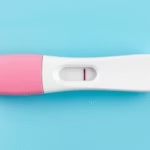In this blog, we will be talking about the start of period vs implantation bleeding. Understanding the differences between these two experiences can help individuals interpret their bodies more effectively. Many women experience confusion when they notice any unusual bleeding. By learning the distinctions and characteristics of menstrual bleeding and implantation bleeding, you can take essential steps to manage your reproductive health. This knowledge is vital not only for those trying to conceive but also for women seeking to understand their menstrual cycles better.
The start of a period, often known as menstruation, marks the shedding of the uterine lining when pregnancy does not occur. The cycle typically lasts anywhere from twenty-one to thirty-five days and involves hormonal fluctuations. Conversely, implantation bleeding refers to light spotting that can happen when a fertilized egg attaches itself to the lining of the uterus. While both experiences may present as vaginal bleeding, they differ significantly in timing, duration, and characteristics.
The Mechanics of the Menstrual Cycle
The menstrual cycle is a complex process regulated by hormones, involving several stages: the follicular phase, ovulation, and the luteal phase. During the menstrual cycle, the ovaries release an egg, and the uterus prepares itself for a potential pregnancy. If the egg is not fertilized, hormone levels drop, and the body sheds the uterine lining, resulting in menstruation. This process can vary from person to person, affecting flow, duration, and associated symptoms.
Implantation Bleeding Explained
Implantation bleeding occurs when the fertilized egg attaches to the uterus. This external sign of early pregnancy can happen about six to twelve days after conception. Many individuals might mistake this light spotting for an early period, but it typically occurs before a missed period. The bleeding is usually light pink or brown and should not be heavy like menstrual bleeding.
Timing Differences
Understanding the timing differences between the start of a period and implantation bleeding is crucial. A woman’s menstrual cycle is generally predictable and occurs every twenty-one to thirty-five days. Implantation bleeding typically occurs approximately one week before a woman’s expected period. Knowing these timeframes **is essential for distinguishing between the two types of bleeding.**
Physical Characteristics of Bleeding
The characteristics of the bleeding can significantly differ. Menstrual blood is usually bright red and may contain clots, while implantation bleeding features lighter shades of pink or brown. Menstrual bleeding lasts for around three to seven days, while implantation bleeding is brief, often lasting a few hours to a couple of days. Recognizing these differences can help women understand their bodies better.
Possible Symptoms Associated
Both the start of a period and implantation bleeding can be accompanied by various symptoms. Menstruation commonly comes with abdominal cramping, back pain, and discomfort, such as mood swings and migraine. In contrast, implantation may include symptoms like minor cramping or breast tenderness, but it is typically less severe than menstrual symptoms. Recognizing these accompanying sensations can also provide clues to whether you are experiencing implantation bleeding or your period.
Testing for Pregnancy
If you experience possible implantation bleeding, you may wonder when to take a pregnancy test. The best practice is to wait until the day of your expected period for the most accurate results. Testing too early can lead to false negatives. If you suspect implantation bleeding due to sex close to your ovulation date, give your body sufficient time to produce the hormone detectable in pregnancy tests.
The Emotional Impact of Bleeding
Understanding the differences between the start of a period and implantation bleeding can significantly reduce anxiety. For many women, the emotional strain arising from uncertainty can be overwhelming, particularly if pregnancy is desired. Learning to recognize the cues and cycles of your body fosters confidence and reduces stress levels associated with conception and menstruation.
Common Misconceptions About Bleeding
There are many misconceptions surrounding bleeding in relation to menstruation and early pregnancy. For example, some individuals may believe any bleeding during early pregnancy indicates a miscarriage. While it is crucial to acknowledge that any bleeding should be evaluated by a healthcare provider, it is essential to note that not all bleeding is harmful. Understanding facts about your body can minimize unfounded fears and provide clarity.
Consulting a Healthcare Professional
It is always advisable to consult a healthcare professional if you experience unusual or prolonged bleeding. Seeking medical advice ensures proper evaluation and adequate management. If the bleeding is excessive or accompanied by severe pain, you should seek immediate medical attention. A healthcare provider can offer personalized insights based on your medical history, making it essential to prioritize consultations when needed.
Tracking Your Cycle
Utilizing apps, journals, or calendars to track your menstrual cycle can help you better understand your body. By recording your periods, symptoms, and any unusual bleeding, you can identify patterns and recognize changes over time. This information becomes immensely useful when discussing your reproductive health with healthcare professionals and can help address any concerns regarding the start of periods or potential implantation bleeding.
In conclusion, distinguishing between the start of period and implantation bleeding is critical for women to gain confidence in understanding their reproductive health. Learning about the mechanics of the menstrual cycle, recognizing symptoms, and consulting healthcare providers are invaluable steps in navigating menstrual experiences. Tracking your cycle further helps in recognizing these experiences, and addressing any concerns early on can lead to informed health choices and improved well-being.
Frequently Asked Questions:
1. What is the difference between implantation bleeding and a regular period?
Implantation bleeding is usually lighter in color, lasts a shorter time, and occurs earlier than a regular period. In contrast, menstrual bleeding is usually bright red, heavier, and lasts three to seven days.
2. How can I tell if I am pregnant based on my bleeding?
If you experience light bleeding around the time you expect your period along with other signs of pregnancy, consider taking a pregnancy test. It’s best to test after your missed period for accurate results.
3. Is implantation bleeding common?
Yes, many women may experience implantation bleeding. However, it does not happen for everyone, and the absence of it does not indicate a lack of pregnancy.
4. Should I visit a doctor if I have spotting?
If you have any concerns regarding spotting or unusual bleeding, it’s wise to consult with a healthcare professional for guidance and evaluation.
5. How can I track my menstrual cycle effectively?
You can use period tracking apps, calendars, or journals to record the dates, flow intensity, and any symptoms you encounter during your cycle to recognize patterns.
Further Reading
What Type of Psychotherapy Is Best for Anxiety?







